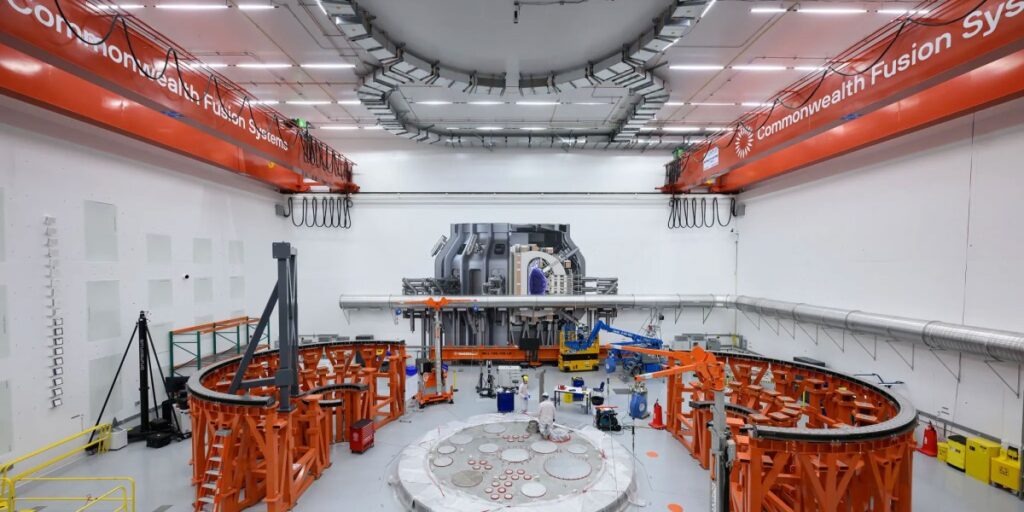Let’s start with fusion: Google’s deal with Commonwealth Fusion Systems is intended to provide the tech giant with 200 megawatts of power. This will come from Commonwealth’s first commercial plant, a facility planned for Virginia that the company refers to as the Arc power plant. The agreement represents half its capacity.
What’s important to note here is that this power plant doesn’t exist yet. In fact, Commonwealth still needs to get its Sparc demonstration reactor, located outside Boston, up and running. That site, which I visited in the fall, should be completed in 2026.
(An aside: This isn’t the first deal between Big Tech and a fusion company. Microsoft signed an agreement with Helion a couple of years ago to buy 50 megawatts of power from a planned power plant, scheduled to come online in 2028. Experts expressed skepticism in the wake of that deal, as my colleague James Temple reported.)
Nonetheless, Google’s announcement is a big moment for fusion, in part because of the size of the commitment and also because Commonwealth, a spinout company from MIT’s Plasma Science and Fusion Center, is seen by many in the industry as a likely candidate to be the first to get a commercial plant off the ground. (MIT Technology Review is owned by MIT but is editorially independent.)
Google leadership was very up-front about the length of the timeline. “We would certainly put this in the long-term category,” said Michael Terrell, Google’s head of advanced energy, in a press call about the deal.
The news of Google’s foray into fusion comes just days after the tech giant’s release of its latest environmental report. While the company highlighted some wins, some of the numbers in this report are eye-catching, and not in a positive way.
Google’s emissions have increased by over 50% since 2019, rising 6% in the last year alone. That’s decidedly the wrong direction for a company that’s set a goal to reach net-zero greenhouse-gas emissions by the end of the decade.
It’s true that the company has committed billions to clean energy projects, including big investments in next-generation technologies like advanced nuclear and enhanced geothermal systems. Those deals have helped dampen emissions growth, but it’s an arguably impossible task to keep up with the energy demand the company is seeing.


